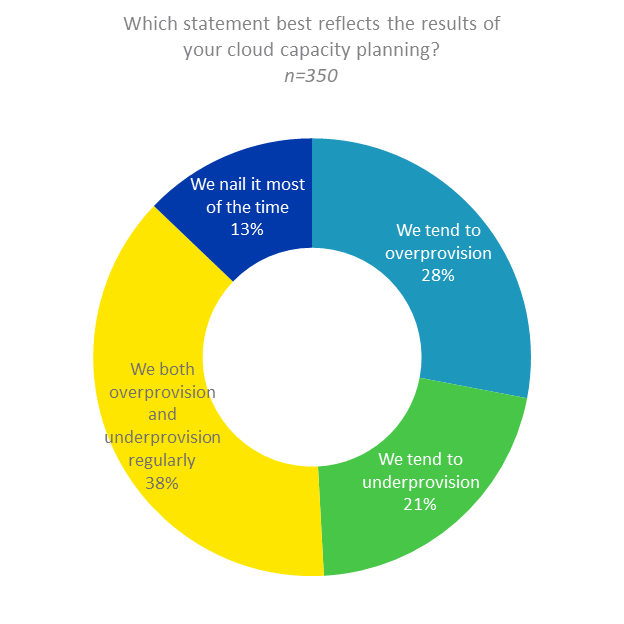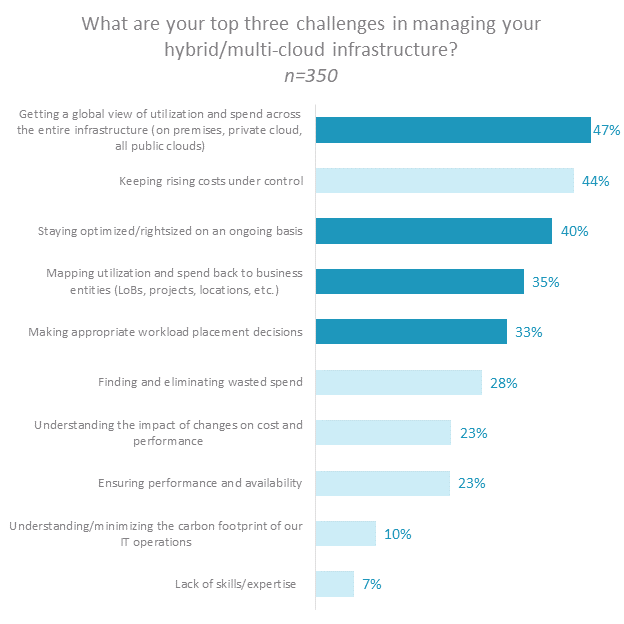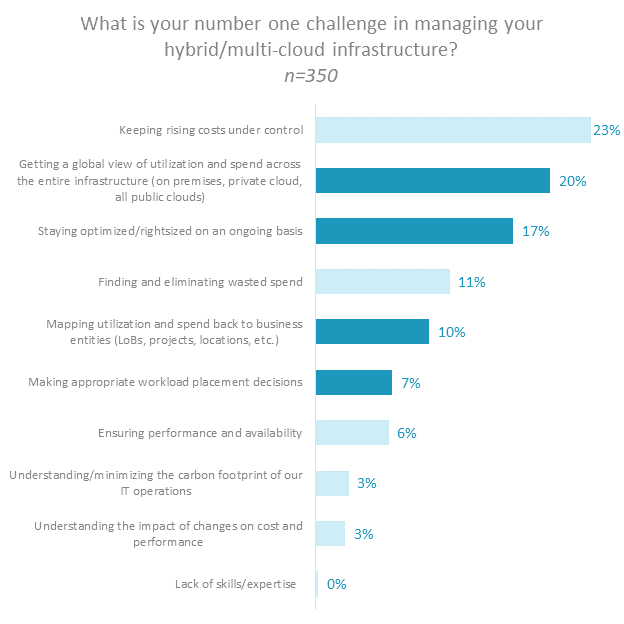The goal of capacity planning is to match resources with demand. There are essentially three outcomes from this analysis. You can underestimate the resources you need (underprovision), which can hurt performance. You can overestimate (overprovision), which adds unnecessary costs. Or you can get it just right (rightsized). And, of course, you want to be rightsized at the lowest possible cost. Because many factors go into cloud capacity planning, it can feel like more of an art than a science. According to our latest research, most companies are making suboptimal capacity decisions.
Capacity planning is hard
The vast majority of respondents—87%—are getting capacity planning wrong. While 21% tend to underprovision and 28% err on the side of overprovisioning, a larger number (38%) are both over- and underprovisioning on a regular basis.

One critical occasion for capacity planning is when you’re moving workloads from one environment to another. The capacity calculus changes depending on the particular environment, and most organizations, 98% of them, are doing a lot of migrations. Almost two-thirds (62%) are planning to migrate workloads from the public cloud to private cloud/on premises, and nearly the same number (59%) will be migrating new workloads to the public cloud. Given organizations’ track record, chances are high that capacity for these migrations will miss the mark.

Data for informed capacity planning is lacking
We asked about top hybrid/multi-cloud infrastructure management challenges, four of which are critical for effective capacity planning, and all showed up in the top five. Almost half of the respondents (47%) struggle with getting a global view of utilization and spend across their entire infrastructure. Without that global view, you’re likely making siloed capacity decisions that may not allow you to be fully rightsized and cost-optimized. And in fact, 40% said that they are hard-pressed to say optimized and rightsized on an ongoing basis. Around one-third of respondents (35%) have difficulty mapping utilization and spending back to business entities, which can make it hard to factor business prioritization and risk into capacity decisions. And one-third (33%) say making appropriate workload placement decisions is challenging.

When asked to identify their top challenge from the list, respondents put getting a global view of utilization in second place (20%) and staying optimized/rightsized on an ongoing basis in third (17%).

Make capacity planning data-driven—and ultimately more accurate—with Virtana Capacity Planning
With Virtana Capacity Planning, part of the Virtana Platform, you can forecast infrastructure demands across your global hybrid infrastructure. Scenario-based capacity projections allow you to anticipate business needs, and AI-powered cloud budget forecasting helps you identify trends and forecast future growth. Virtana Capacity Planning enables you to:
- Forecast future demand based on usage patterns and risk exposure
- Anticipate business requirements based on planned growth or changes
- Identify potential availability issues before they occur
Get the survey report: The State of Multi-Cloud Management

James Harper
Head of Product Marketing, Virtana




